Published on: April 2, 2024
The Most Recent Advances in AI Integration in CBT: 2024 Edition
Author: Inge von Aulock
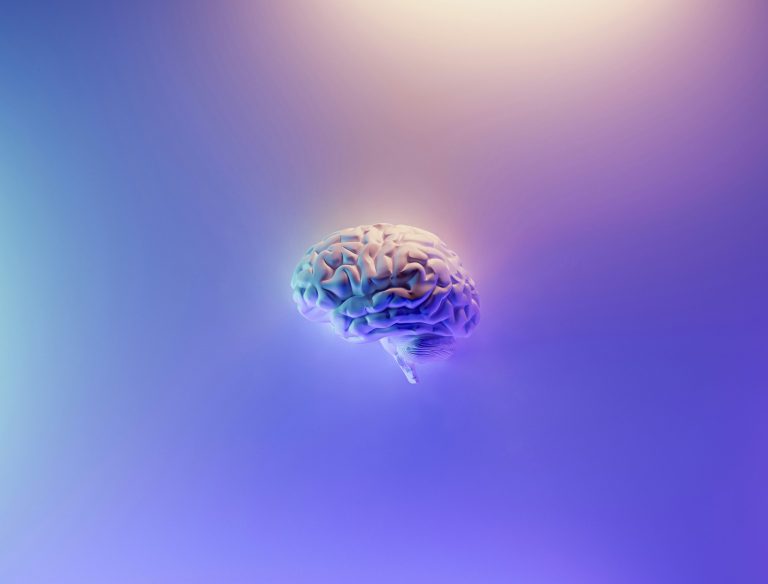
AI integration in Cognitive Behavioral Therapy is no longer a futuristic concept; it’s the present reality shaping mental healthcare.
In 2024, the fusion of artificial intelligence and CBT is revolutionizing treatment approaches, offering unprecedented benefits. This blog will guide you through the latest advances in this field, providing a comprehensive understanding of AI’s role in CBT, its evolution in mental healthcare, and its future prospects.
You’ll also get a step-by-step guide to integrating AI in CBT practices and insights into the integrated approach to CBT.
Welcome to the new era of treatment, where AI and psychology intertwine to redefine mental healthcare. Even the World Health Organization recognizes the importance of AI in healthcare, so don’t get left behind!
Harnessing the power of AI in Cognitive Behavioral Therapy (CBT)
- Uncover the role and benefits of AI in CBT.
- Learn how to integrate AI into CBT practices.
- Gain insights from real-world examples of AI applications in CBT.
Understanding the basics of AI in CBT
Cognitive Behavioral Therapy (CBT) is a form of psychological treatment that has been proven effective for a range of problems including depression, anxiety disorders, alcohol and drug use problems, marital problems, eating disorders, and severe mental illness. Simply put, it aims to identify and change negative thought patterns. In the context of artificial intelligence (AI), CBT refers to the use of AI technologies to enhance the delivery and effectiveness of this therapy.
AI plays a pivotal role in delivering cognitive behavior therapy by providing personalized treatment plans, improving patient engagement, and offering real-time feedback. It can analyze patient data to identify patterns and predict outcomes, thereby enabling therapists to tailor treatment to individual needs. AI can also automate routine tasks, freeing up therapists to focus on more complex aspects of care.
Real-world examples of AI applications in CBT abound. For instance, Woebot, an AI-powered chatbot, uses CBT principles to help users manage their mental health. It provides instant responses, tracks moods, and offers insights based on user interactions.

A step-by-step guide to integrating AI in CBT
- Identifying the need for AI in CBT: The first step in integrating AI into CBT is recognizing the need for it. This involves understanding the limitations of traditional CBT and how AI can address them. For instance, AI can help overcome barriers such as accessibility, cost, and stigma associated with mental health concerns and treatment.
- Choosing the right AI tools for CBT: Once the need for AI is established, the next step is to select the appropriate AI tools. This depends on the specific needs of your practice and your patients. Consider factors such as ease of use, cost, data security, and the level of support provided by the AI vendor.
- Implementing AI in CBT practices: After choosing the right AI tools, the next step is implementation. This involves integrating the AI system into your existing workflow, training staff on how to use it, and educating patients about its benefits. It’s crucial to ensure that the AI system is used ethically and responsibly, with respect for patient privacy and consent.
- Monitoring and adjusting: The final step is to monitor the effectiveness of the AI system and make necessary adjustments. This involves tracking patient outcomes, gathering feedback from staff and patients, and continuously improving the system based on these insights.
By following these steps, you can harness the power of AI to enhance your CBT practice, improve patient outcomes, and stay at the forefront of mental healthcare innovation.
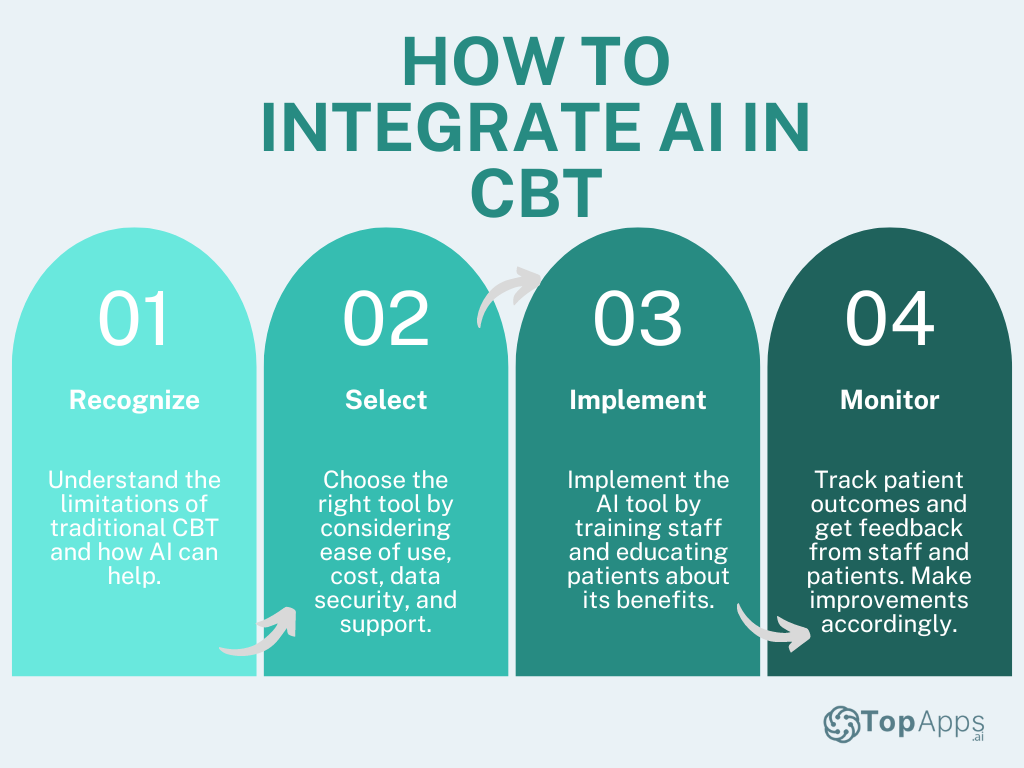
AI tools for CBT
AI tools like Tess, Wysa, and Woebot are revolutionizing therapy by providing virtual psychotherapeutic services. These chatbots have shown promise in reducing symptoms of depression and anxiety across various populations, including the elderly. They’re integrated into practice to assist with diagnosis, consultations, psychoeducation, and treatment delivery, offering more personalized and adaptive responses through text and voice interactions.
Tess
Tess by X2AI is an AI therapy chatbot that supports Cognitive Behavioral Therapy (CBT) by offering immediate, accessible emotional support and therapy services. It interacts with users through text, providing psychological advice and coping mechanisms based on CBT principles. Tess helps users manage their mental health by identifying and altering negative thought patterns, and offering strategies to handle stress, anxiety, and depression. This innovative tool makes mental health support more accessible, especially for those facing barriers to traditional therapy.
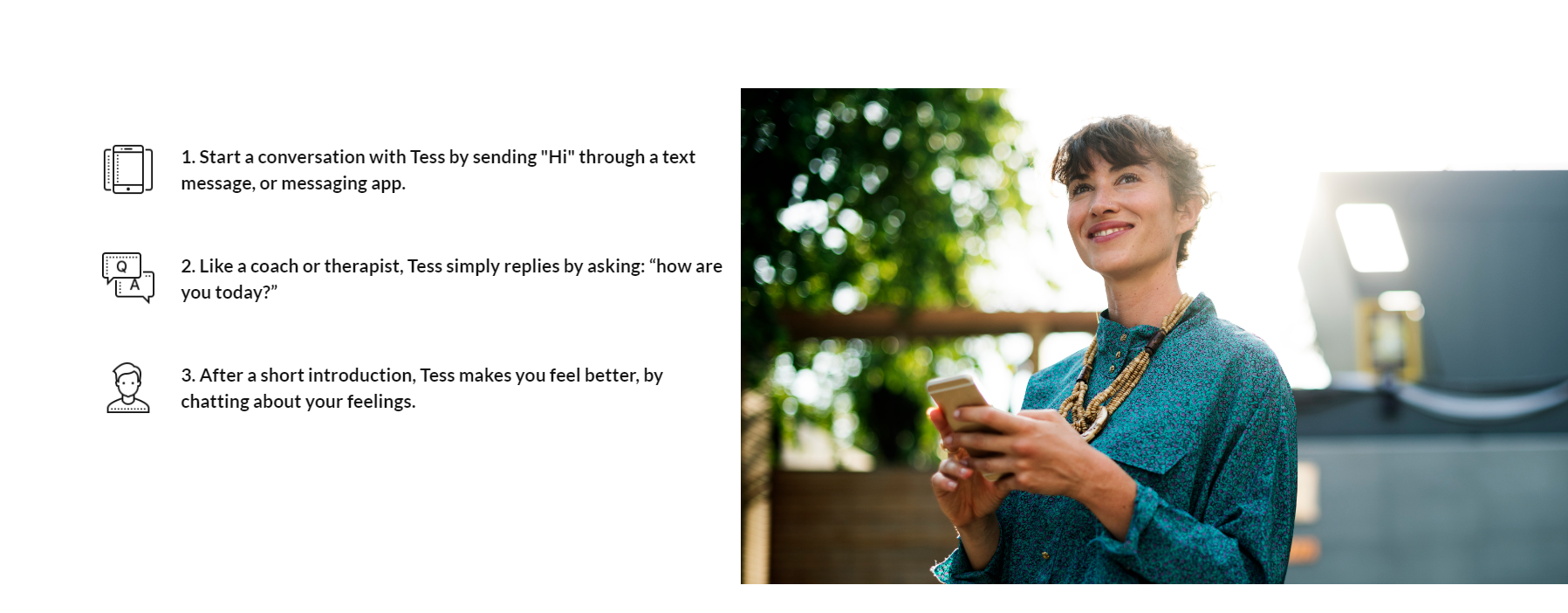
Wysa
Wysa, an AI-powered mental health app, assists users through CBT and other therapeutic techniques. It acts as a “pocket therapist,” engaging users in empathetic conversations and offering self-help exercises. Wysa helps identify patterns in thoughts and emotions, teaching coping mechanisms to manage stress, anxiety, and depression. By providing personalized support and evidence-based interventions, Wysa makes mental health care accessible anytime, enhancing emotional well-being and resilience.
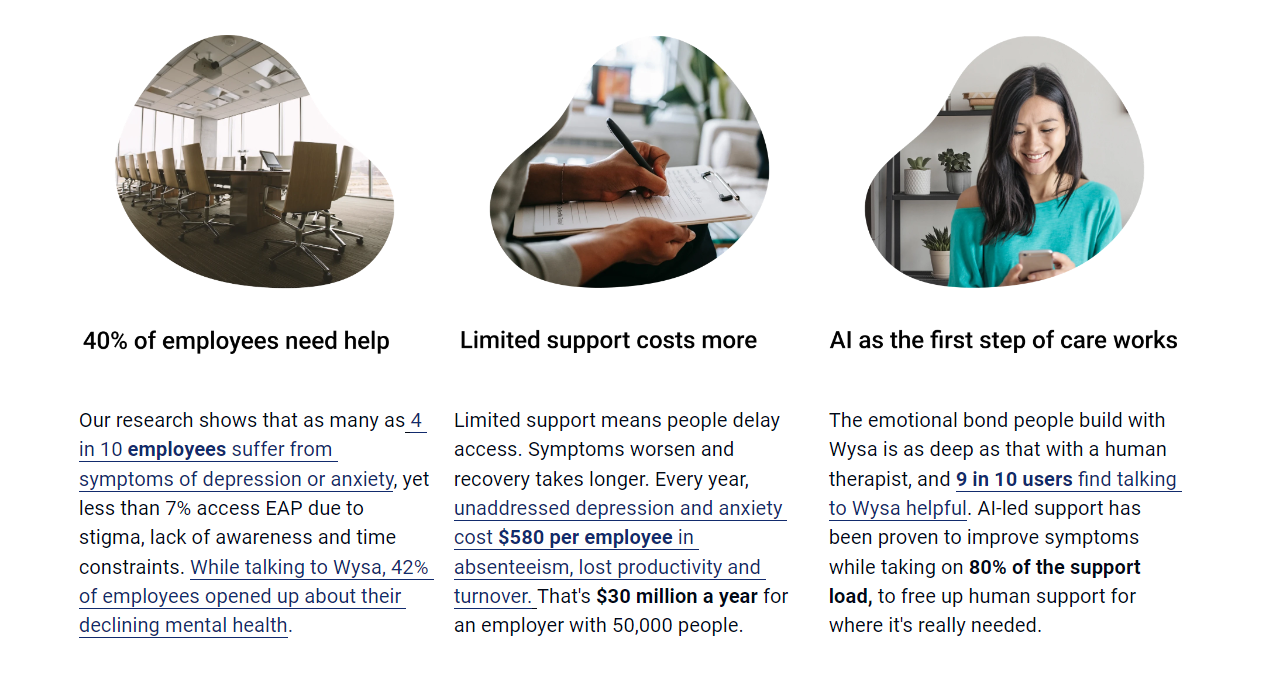
Woebot Health
Woebot Health is an AI-powered chatbot designed to help users manage their mental health through CBT techniques. By engaging in conversation, Woebot identifies users’ mood patterns and provides evidence-based practices and exercises to help them cope with feelings of depression, anxiety, and stress. Its interactive and personalized approach offers users supportive feedback and teaches them CBT strategies to apply in daily life, making mental health support more accessible and convenient.

The evolution of AI in mental healthcare
- AI’s journey in mental healthcare: from rudimentary applications to sophisticated tools.
- The transformative impact of AI on mental healthcare outcomes.
- The latest AI tools and technologies are revolutionizing mental healthcare.
The journey of AI in mental healthcare
Artificial Intelligence has been a game-changer in mental healthcare, evolving from basic applications to complex, patient-centric tools. The journey of AI in this field has been marked by significant milestones, each contributing to a more effective and personalized approach to mental health treatment.
AI’s initial foray into mental healthcare was marked by simple, rule-based systems designed to assist clinicians in diagnosis and treatment planning. Over time, these systems evolved, incorporating machine learning algorithms capable of analyzing vast amounts of data to identify patterns and make predictions.
The integration of AI in mental healthcare has seen several key milestones. These include the development of AI-powered chatbots for mental health support, the use of machine learning algorithms for predictive analysis in mental health, and the advent of AI tools capable of analyzing speech and text for signs of mental health problems.
AI has had a profound impact on mental healthcare outcomes. It has enabled more accurate diagnoses, personalized treatment plans, and improved patient engagement. AI’s ability to analyze large datasets has also facilitated research, leading to new insights into mental health conditions and their treatment.
Recent advances in AI for mental healthcare
The field of mental healthcare is currently witnessing a surge in innovative AI tools and technologies. These advances are not only enhancing the quality of care but also making mental health services more accessible to those who need them.
Recent years have seen the emergence of sophisticated AI tools in mental healthcare. These include AI-powered mobile apps for mental health support, machine learning algorithms for real-time monitoring of mental health conditions, and AI systems capable of analyzing neuroimaging data to aid in diagnosis and treatment.
AI and CBT: Real-world examples and advice
This UK-based online therapy provider, endorsed by the National Health Service (NHS), has delivered over 460,000 hours of CBT to approximately 86,000 clients for conditions like mood and anxiety disorders, depression, and PTSD. Using data-driven techniques and Natural Language Processing (NLP), Ieso has improved recovery rates to 53% across all disorders, which is slightly above the national average. They report even higher success rates for depression (62%) and generalized anxiety disorder (73%) compared to national averages of 50% and 58%, respectively. Ieso’s approach demonstrates how AI can increase access to care while managing its quality, promising more efficient therapy with potentially better outcomes.

American Psychological Association
The APA mentions AI’s role in making therapy more accessible and less expensive while improving interventions and automating administrative tasks. This broader perspective underlines the potential for AI to enhance the effectiveness of psychological practices, including CBT, through tools like chatbots and machine learning applications that support data analysis, patient monitoring, and personalized treatment plans.
The World Economic Forum article emphasizes monitoring patient progress and altering treatment where necessary as one of the ways AI is improving mental health therapy. This approach highlights the potential for AI to transform therapeutic interventions, making them more adaptable and responsive to individual patient needs. It’s clear that the general trend is toward integrating AI tools for better patient care outcomes.
AI’s role in psychology: A new era of treatment
- AI is revolutionizing the field of psychology, offering new treatment methods and insights.
- This section explores the applications, benefits, challenges, and future predictions of AI in psychology.
- Real-world case studies illustrate the transformative power of AI in this field.
AI applications in psychology
AI is making waves in psychology, from cognitive to clinical, and even social psychology. It’s not just about automating tasks; it’s about augmenting human capabilities and offering new ways to understand and treat mental health conditions.
In cognitive psychology, AI is being used to model cognitive processes, providing insights into how the human mind works. For instance, machine learning algorithms are being used to predict a patient’s progression to dementia, with an accuracy rate of up to 90% when provided with 6 variables in a study published by the National Library of Medicine.
In clinical psychology, AI-powered chatbots are providing cognitive behavioral therapy (CBT) to patients, offering a scalable and cost-effective solution for mental health treatment. Woebot, for instance, is a chatbot that delivers CBT to users, and studies have shown it can significantly reduce symptoms of depression and anxiety.
AI is also being used in social psychology to analyze social media data, helping to predict and prevent mental health crises. For example, Facebook’s AI algorithms can detect signs of suicidal ideation in users’ posts, potentially saving lives.
However, the use of AI in psychology is not without its challenges. Issues such as data privacy, the need for human oversight, and the risk of over-reliance on AI tools are all areas that need careful consideration.
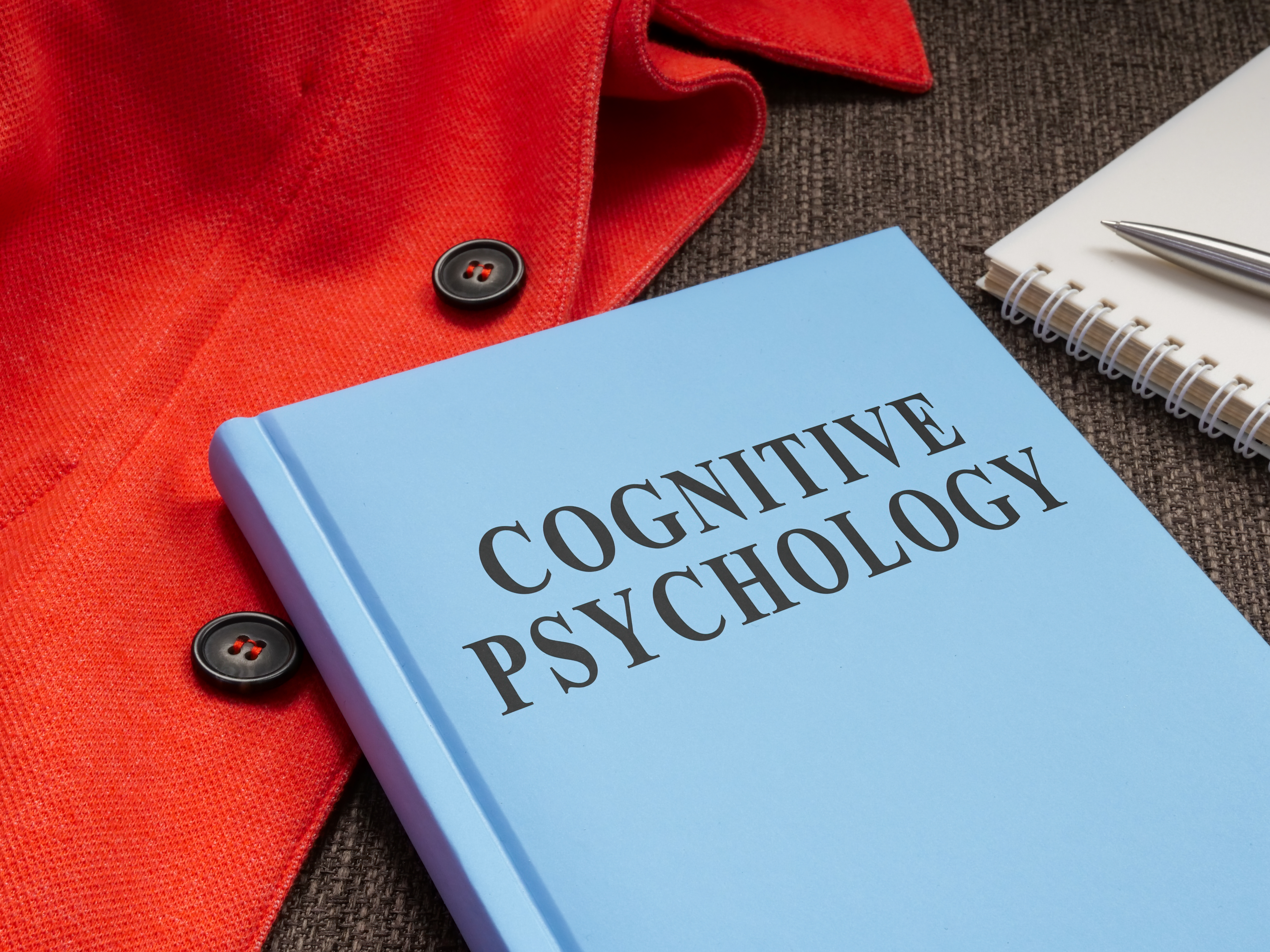
Future predictions for AI in psychology
As we look to the future, AI is set to play an even bigger role in psychology. Experts predict that AI will continue to advance, offering more sophisticated tools for diagnosis, treatment, and research.
One prediction is that AI will become increasingly integrated into therapy sessions, with AI-powered tools providing real-time insights and recommendations to therapists. This could revolutionize the therapist-patient relationship, making therapy more personalized and effective.
Another prediction is that AI will enable more proactive mental health care. By analyzing data from wearable devices and social media, AI could predict mental health crises before they occur, enabling early intervention.
For psychologists, it’s crucial to stay abreast of these developments and consider how AI can enhance their practice. This might involve upskilling in areas such as data analysis and machine learning or collaborating with AI experts to develop new tools and approaches.
In conclusion, AI is transforming psychology, offering new ways to understand and treat mental health conditions. While there are challenges to navigate, the potential benefits are immense. As we move into the future, it’s clear that AI will play an increasingly central role in this field.
Unpacking the integrated approach to CBT
- Integrated CBT combines traditional CBT techniques with AI technology.
- This approach enhances the effectiveness of therapy and allows for personalized treatment.
- The implementation process involves careful planning, execution, and evaluation.
The concept of integrated CBT
Integrated Cognitive Behavioral Therapy is a therapeutic approach that combines traditional CBT techniques with the latest advancements in artificial intelligence. This fusion allows for a more personalized and effective treatment, as AI can analyze vast amounts of data to provide insights that would be impossible for a human therapist alone.
The benefits of an integrated approach to CBT are numerous. Firstly, it allows for a more personalized treatment plan. AI can analyze a patient’s behavior, speech patterns, and other data to identify specific areas that need attention. This means that therapy can be tailored to the individual’s needs, rather than following a one-size-fits-all approach.
Secondly, AI can provide real-time feedback and support. This can be particularly useful for patients who may struggle to access regular face-to-face therapy, as they can receive support whenever and wherever they need it.
Finally, AI can help to monitor progress and adjust treatment plans as necessary. By analyzing data over time, AI can identify patterns and trends that may indicate a need for changes in the treatment plan.
Implementing an integrated CBT approach with AI
Implementing an integrated CBT approach using AI involves several steps. Here’s a step-by-step guide to help you understand the process:
- Identify the need: The first step is to identify the need for an integrated approach. This could be due to a lack of progress with traditional CBT, a need for more personalized treatment, or a desire to incorporate the latest technology into therapy.
- Choose the right AI tool: Next, you’ll need to choose the right AI tool. There are many different AI tools available, each with its own strengths and weaknesses. It’s important to choose a tool that aligns with your needs and goals.
- Train the AI: Once you’ve chosen your AI tool, you’ll need to train it. This involves inputting data and allowing the AI to learn from it. The more data the AI has, the more accurate its insights will be.
- Implement the AI: After the AI has been trained, it’s time to implement it. This involves integrating the AI into your therapy sessions and using it to analyze data and provide insights.
- Monitor and adjust: Finally, you’ll need to monitor the AI’s performance and adjust as necessary. This could involve retraining the AI, adjusting its parameters, or even switching to a different AI tool if necessary.
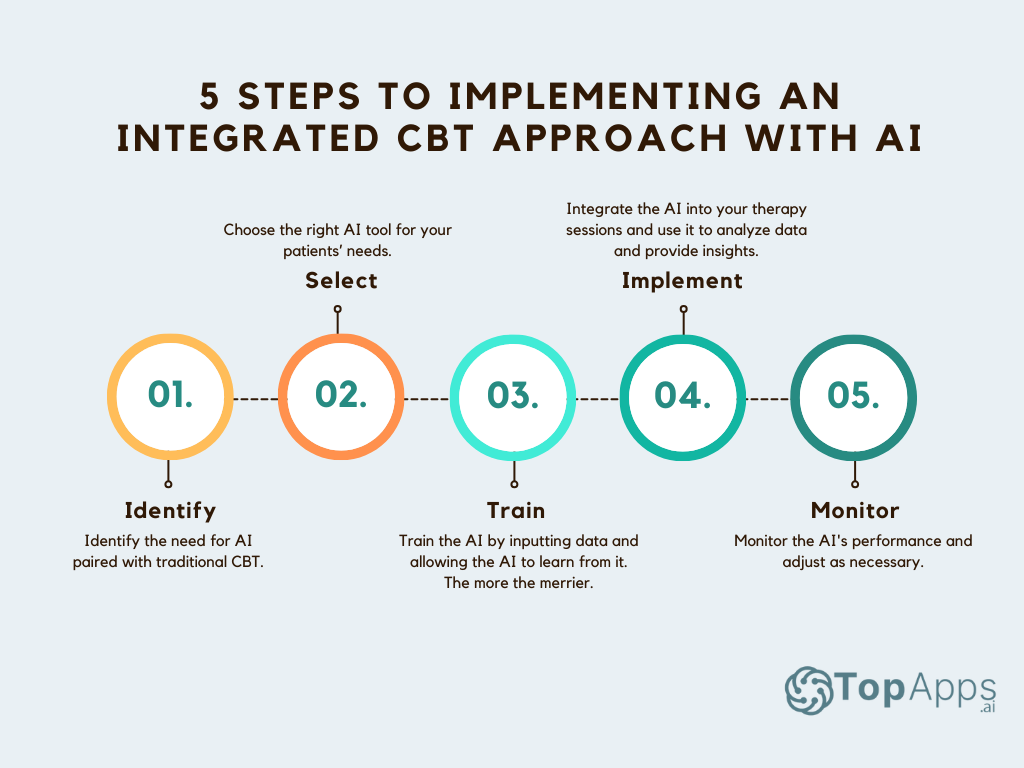
When implementing an integrated CBT approach with AI, it’s important to keep a few best practices in mind. Firstly, always prioritize the patient’s needs and comfort. AI should be used to enhance therapy, not replace the human connection. Secondly, be prepared to adjust and adapt. AI is a powerful tool, but it’s not perfect. Be ready to make changes as necessary to ensure the best possible outcome for your patients.
Looking ahead: The future of AI in CBT
- Potential impact on mental healthcare.
- Strategies for mental health professionals to leverage these trends.
Predicted trends for AI in CBT
The coming years are expected to see even more advancements in this field. AI algorithms are predicted to become more sophisticated, capable of understanding not just human emotions, but also the nuances of human behavior. This could lead to more accurate diagnoses and more effective treatment plans.
AI-powered CBT apps are also expected to become more popular, making mental healthcare more accessible to people in remote areas or those who cannot afford traditional therapy. These apps could also provide mental health professionals with valuable data, helping them understand mental health trends and develop more effective treatment strategies.
Preparing for the Future of AI in CBT
Mental health professionals need to stay ahead of these trends to leverage the benefits of AI in CBT. They can do this by continuously updating their knowledge and skills, attending workshops and seminars, and participating in online courses and webinars.
Professionals should also consider collaborating with AI developers and researchers. This could provide them with insights into the latest advancements in AI and help them understand how these advancements can be used in CBT.
Finally, mental health professionals should embrace the changes brought about by AI. While AI can never replace human therapists, it can certainly enhance their capabilities and make their work more efficient. By embracing AI, mental health professionals can provide better care to their patients and contribute to the advancement of mental healthcare.

Embracing the AI revolution in CBT
AI’s role in CBT has evolved from a mere concept to a transformative tool, reshaping mental healthcare. Its integration into CBT has streamlined processes, improved outcomes, and opened new avenues in psychology. The journey of AI in mental healthcare has been marked by significant milestones, with recent advances promising even more potential.
The future of AI in CBT is bright, with predicted trends indicating a profound impact on mental healthcare. The integrated approach to CBT, powered by AI, is not just a trend, but a necessity for mental health professionals.
Now, it’s your turn to step into this new era. Start by identifying the need for AI in your CBT practice. Choose the right AI tools, implement them, and monitor their effectiveness. Stay updated with the latest AI trends in CBT and prepare for the future by leveraging available resources for learning and development.
How will you integrate artificial intelligence into your CBT practice to enhance mental healthcare outcomes? Remember, the future is not just about embracing AI, but about harnessing its power to transform lives.
So, are you ready to be a part of this AI revolution in CBT?
Inge von Aulock
I'm the Founder & CEO of Top Apps, the #1 App directory available online. In my spare time, I write about Technology, Artificial Intelligence, and review apps and tools I've tried, right here on the Top Apps blog.
Recent Articles
Introduction AI burnout reduction isn’t a futuristic concept anymore. It’s a reality. In 2024, we’re not just talking about AI; we’re living...
Read More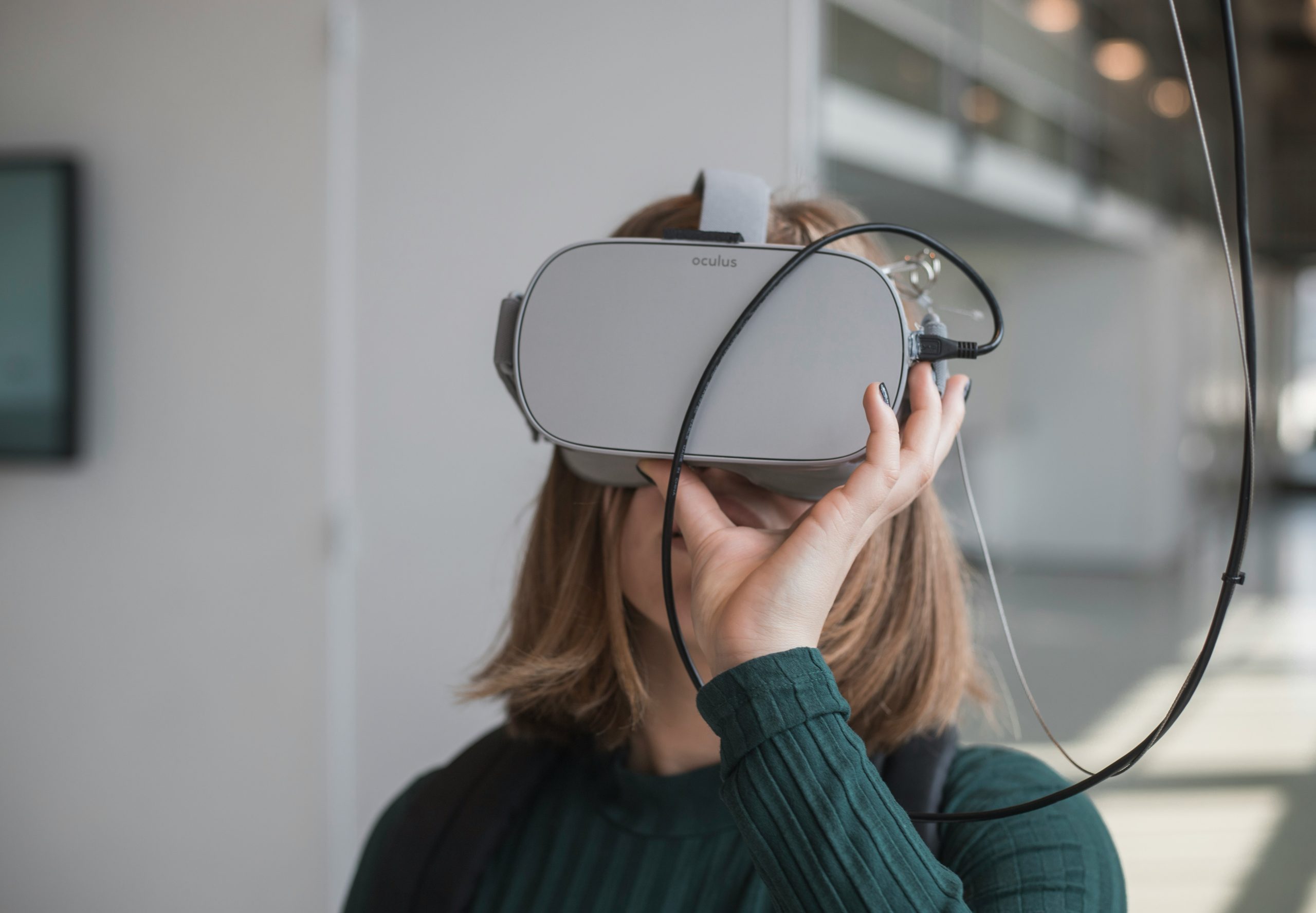
Explore the advantages of combining AI and VR with digital CBT platforms, enhancing therapy effectiveness and patient engagement through data.
Read More
In our artificially intelligent world, learning high-income AI skills can jumpstart your career and further your opportunities. Find out the fundamentals now.
Read More